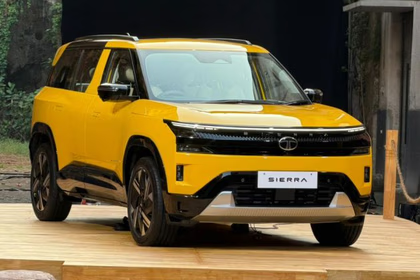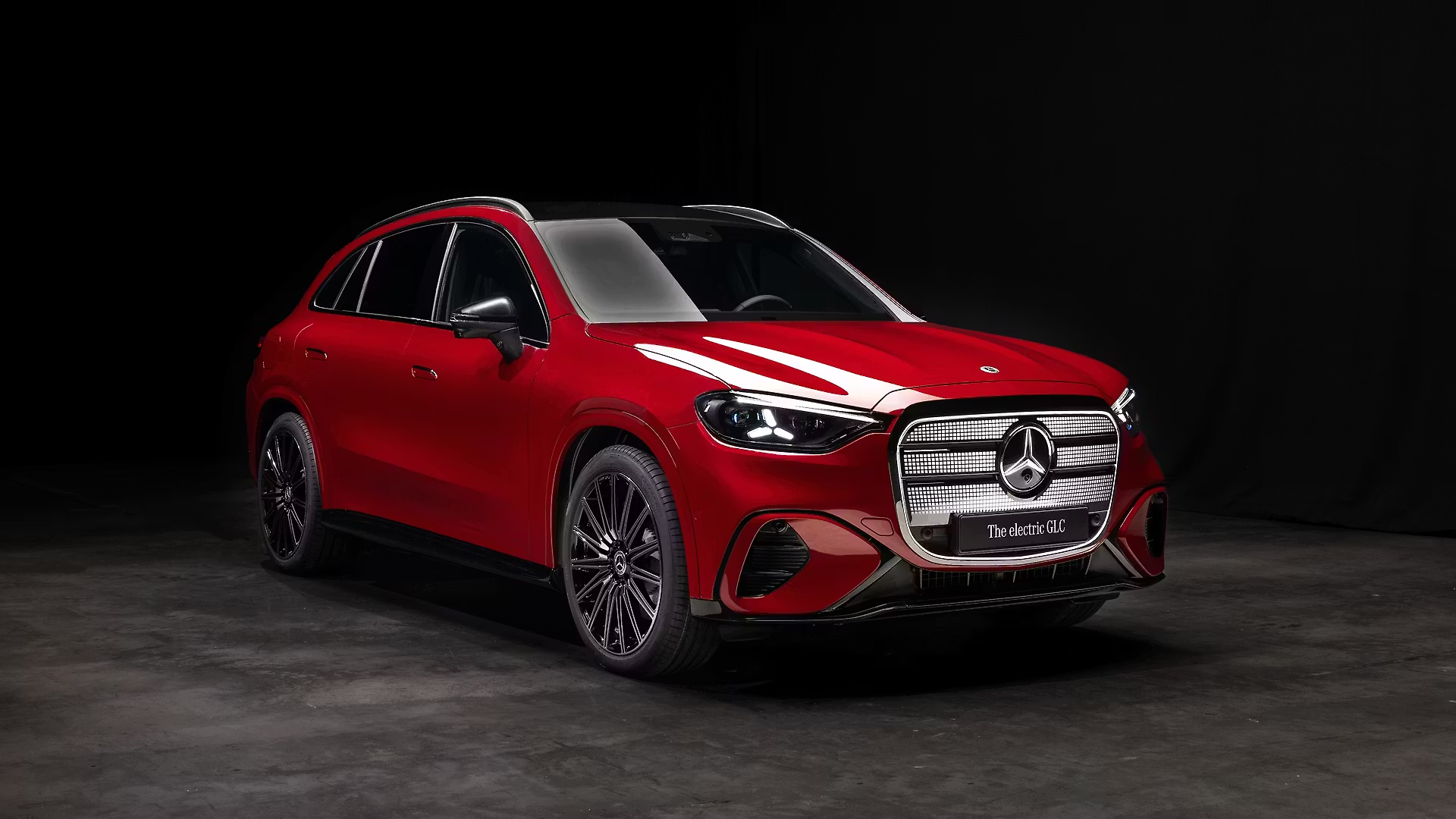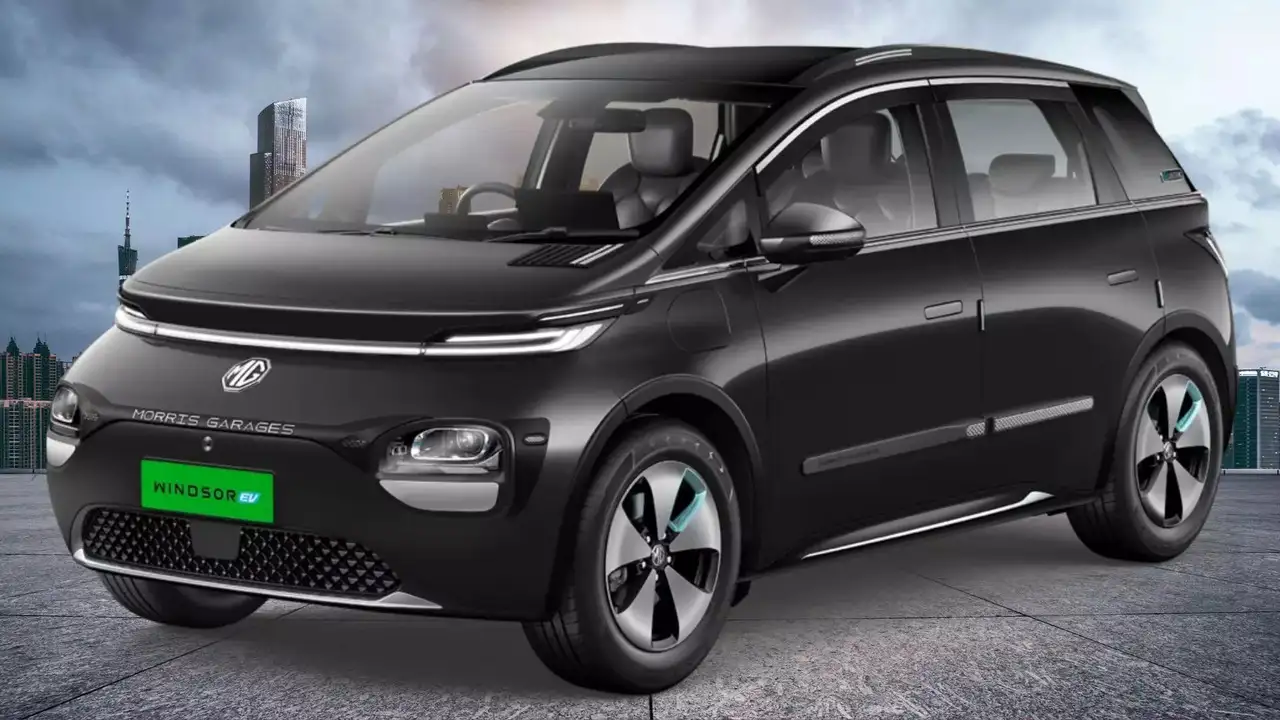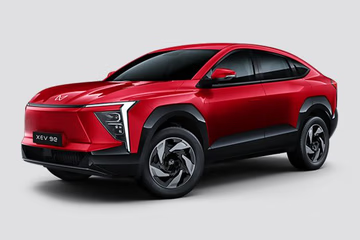Introduction — A Comeback in the Making
The Kia Syros was once introduced as a stylish, compact, feature-loaded SUV aimed at young urban buyers. The Kia Syros EV signals not just a new powertrain, but a potential revival of the nameplate as well. The silent hum of electricity might give Syros that second life it always deserved.
Briefly introduce the Kia Syros nameplate.
- Launched as a tech-focused compact SUV positioned below the Seltos
- Known for bold styling, premium interiors, and segment-first features.
- Targeted towards city-centric buyers seeking style + modern design
- Built on a versatile platform that allows the possibility of future electrification
- Strong initial demand during the launch phase, but the momentum faded later.
Falling demand of the ICE version and why Kia might be shifting its strategy
- Pricing placed too close to bigger SUVs like the Seltos caused cross-shopping loss.
- Poor USP at the time, versus entrenched petrol competitors, plateaued sales.
- Increasing consumer preference for EVs in the ₹15–22 lakh range
- Electric SUVs are perceived as premium and futuristic, in perfect alignment with Kia’s brand.
- EV shift helps Syros reposition itself rather than competing head-to-head with ICE rivals.
The spy shots of the Syros EV while charging
- EV charging port clearly visible on the front-left fender
- Larger aerodynamic alloy wheels denote EV efficiency focus.
- Closed/covered grille area pointing toward EV-specific design
- New LED signature lights caught under camouflage
- Spied at a public fast-charging station — suggesting near-production-ready prototype
- Test mule body language confirms Kia’s intention of rebooting the model rather than axing it altogether.
Spy Shot Breakdown — What the Images Reveal
The spy shots of the Kia Syros EV are not just leaked photos but a roadmap of what Kia is engineering next. Even with heavy camouflage, several design cues and EV-specific elements detail much about this compact electric SUV.
Location of EV Charging Ports
- The charging port is situated on the front-left fender, as it is in many of the modern Kia EVs.
- Placement suggests compatibility with fast public charging stations and home wall-box chargers without obscuring front visibility.
Updated aero wheels
- The test mule features wind-cheating aerodynamic alloy wheels, a common design signature to reduce drag and increase range.
- The tyre width looks wider than on the ICE version – presumably to take the higher torque from the electric motor.
Closed front grille – EV signature
- The area at the front grille is almost completely sealed, confirming this isn’t a mild-hybrid or hybrid test mule, but a pure EV.
- Kia’s signature Tiger Nose shape appears retained but in a smooth, EV-style interpretation.
Revised lighting elements
- The DRLs bring a new boomerang-like LED pattern, which is absent on the petrol Syros.
- The tail-lamp housing also appears reworked, hinting at a refreshed rear design for the electric variant.
Upgrades to bumpers and fascias
- Vertical air curtains added to the front bumper to route airflow around the wheels, for better aerodynamics
- A diffuser-like insert in the rear bumper replaces the area for the exhaust, clearly an EV-only design approach.
Test mule dimensions & stance
- No visible changes in length/height compared to the ICE version, confirming the same body shell/platform.
- Slightly raised suspension setup – perhaps for battery protection and better ground clearance
Interior glimpses through windows
- New digital instrument cluster spied replacing the older analog-digital unit
- Gear lever missing — replaced by what looks like a rotary drive selector on the center console.
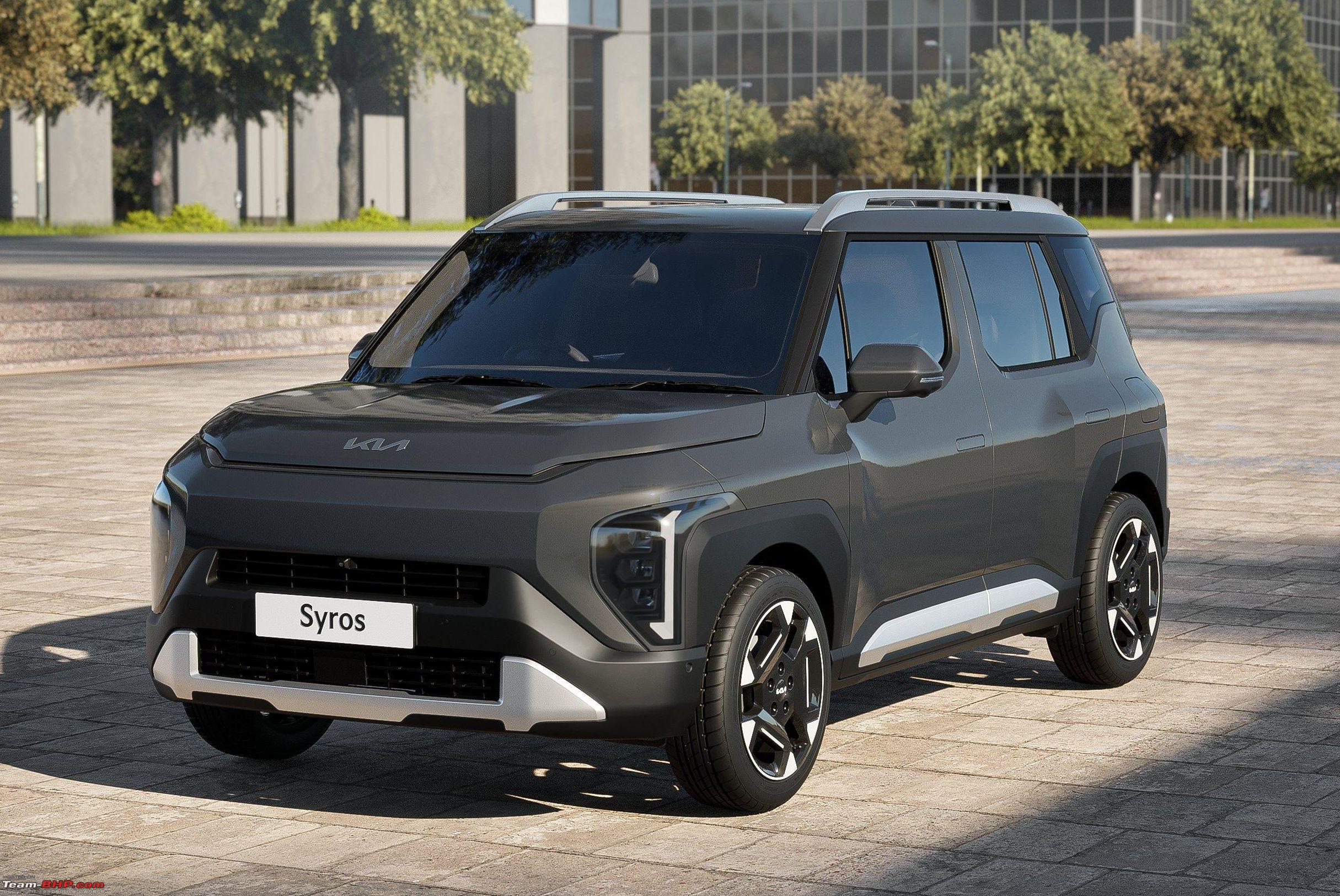 Battery & Motor Expectations
Battery & Motor Expectations
The Kia Syros EV now spotted on public roads, the biggest question revolves around what lies underneath-the battery, the motor, and real-world usability that will define its success. The Syros EV aims to strike a balance between range, affordability, and everyday performance rather than chasing extreme numbers.
Presumed capacity of the battery pack: 45–50 kWh (estimated)
- It is likely to offer a 45 kWh battery in the base variant and about 50 kWh in the long-range variant.
- Pack size optimized to maintain competitive pricing while ensuring strong range output.
- Liquid-cooled battery architecture expected for improved thermal management in the Indian climate
- Battery chemistry could follow the NMC formulation as in other Kia EVs for efficiency and longevity.
Possible driving range (350-450 km expected)
- The conventional-range variant is expected to deliver 350–380 km (MIDC) on a single charge.
- The long-range model could reach 420–450 km (MIDC), placing it ahead of most segment rivals.
- It is expected to maintain over 300 km of real-world city range even with AC usage, making it daily-commute friendly.
- Regenerative braking, with its multi-level settings, is likely to contribute to extended range in urban stop-go traffic.
Possibility of dual-motor AWD variant later
- Kia may consider a performance AWD variant after initial market reception.
- Dual-motor output could exceed 180–200 bhp with 380–400 Nm torque.
- Would position the Syros EV as a more premium rival to upcoming AWD EVs like the Creta EV, top variant AWD version likely to be launched exclusively in GT Line or GT-Line+ trims, if confirmed
Platform — Modified ICE or Dedicated EV?
The big talking point with the Syros EV, though, is whether Kia is building it on a dedicated EV architecture, like the E-GMP, or is merely adapting the internal combustion-powered Syros platform for electrification. These spy shots, the ground clearance, and the proportioning of its body all hint that the Syros EV is indeed a re-engineered version of the ICE platform rather than a purpose-built EV chassis. And that choice could be anything but a compromise; it may be a calculated decision to keep pricing competitive in the Indian market while retaining the familiarity in ride quality and space.
Comparison with existing Kia EV architecture
- The flagship EVs of Kia come with an E-GMP dedicated EV platform for long range and ultra-fast charging, such as EV6 and EV9.
- Syros EV doesn’t follow the low-floor skateboard architecture associated with E-GMP.
- Wheelbase, floor height, and door sills hint toward the modular ICE/EV-adaptable structure, much like in the Kia Niro EV approach.
- Likely utilizes a hybrid adaptive platform, allowing coexistence of ICE and EV for economies in manufacturing costs.
Whether the Syros EV uses the modified platform from Syros ICE
- Test mule silhouette confirms the same shell and dimensions as the petrol Syros
- Battery pack likely mounted within the floor tunnel and under-seat sections rather than a full-flat EV floor.
- Retains front MacPherson & rear torsion beam layout from the ICE version, but re-tuned for EV weight
- Higher ride height points to added battery protection cladding and EV-specific underbody treatment
Benefits and drawbacks of using a re-engineered ICE platform
Benefits
- Lower cost of development and production → lower prices available for buyers
- Faster start-up timeline than creating an entirely new EV chassis
- Familiar ergonomics and cabin layout reduce the buyer adaptation curve.
- Existing parts and the supply chain ecosystem accelerate manufacturing readiness.
Disadvantages
- May not support ultra-fast 800V charging like E-GMP models
- High-floor EV skateboard packaging limits rear floor flatness & seating comfort. Range potential is slightly lower than dedicated EV platforms due to weight and space limitations.
Design Changes Compared to ICE Kia Syros
It’s obvious that Kia hasn’t simply electrified the Syros mechanically but also visually reimagined it to reflect its new identity as an EV. The styling looks altogether more refined, more aerodynamic, and more futuristic than the petrol version. However, the overall silhouette is still unmistakable.
EV-specific aerodynamic enhancements
- Smoother bumper design to reduce air resistance and improve range efficiency
- Air curtains alongside the bumper to guide air around wheels for better aerodynamics
- Flush-style ORVM and door beading to reduce wind noise at higher speeds
- Underbody cladding redesigned for smoother airflow under the car, reducing turbulence.
New alloy wheel patterns
- Aero-optimized alloy wheels with geometric design replacing the sporty ICE wheel pattern
- Wheel covers partially close the openings to reduce wind drag and improve range capability.
- Larger wheel design hints at premium visual presence while supporting EV efficiency.
- Tyres are of the low rolling resistance type to maximize battery economy.
Grille closed and rear fascia revised.
- Signature-closed Tiger Nose grille reflects reduced cooling requirements for EV powertrain.
- Revised LED DRL and headlamp signature, introducing a more futuristic visual tone
- At the back, a new lightbar-style tail lamp cluster looks to have replaced the split design of the ICE model.
- Diffuser-like lower bumper treatment replaces exhaust cutouts, signals pure electric identity.
Interior upgrades – new digital cluster & rotary drive selector
- Fully digital instrument cluster expected to display EV metrics such as regen level, charge status, and energy flow
- Centre console redesigned with a rotary dial drive selector, replacing the conventional gear lever.
- New touchscreen UI layout likely; EV-focused menus include charging stations and eco driving analysis.
- Materials for interior will likely trend in a tech-driven theme: with more brushed metallic inserts, backlit elements, and blue accents for EV.
Features & Tech Expected
Kia has always positioned the Syros as a feature-rich premium urban SUV, and the EV version is expected to take this identity to the next level. It looks like the Syros EV will not just carry the feature list from the ICE forward but will move into a more technology-intensive space, emphasizing connected mobility, digital experience, and onboard convenience. The tech upgrades are expected to play a big role in differentiating the EV version from its petrol predecessor and justify the premium pricing.
Larger touchscreen with EV-focused UI
- Expected 10.25-inch or 12.3-inch infotainment system with refreshed layout and smoother animations
- Dedicated EV menus for range projection, charging status, regeneration levels, and battery temperature
- Onboard infotainment: Navigation system to feature EV-friendly route planning and charging station locator integration
- Support for wireless Android Auto & Apple CarPlay, along with Kia Connect telematics features
ADAS Level-2 likely: smart cruise control, lane keeping, and AEB probable
- Lane keep assist + lane departure warning for increased highway safety.
- Automatic Emergency Braking: Its Effects
- Blind-Spot Collision Warning and Rear Cross-Traffic Alert expected on top variants.
360° camera + ventilated seats + wireless charging
- 360° surround-view camera system for safer parking in tight city spaces
- Ventilated front seats are expected to be a popular feature in Kia’s premium lineup and a perfect feature to have during Indian summers.
- Wireless phone charging pad with a cooling vent to prevent overheating of the device.
- Dual-zone climate control is likely, along with rear AC vents and an air purifier.
OTA updates + V2L possibility
- OTA map updates, infotainment software, ADAS calibration, and improvement of car systems
- V2L-Vehicle-to-Load technology enables the power supply of small appliances and electronics even outside.
- Remote charging control via app: Start/Stop charging, charging schedule, and pre-cooling cabin
- Smart key-based profile memory (seat + infotainment settings) possibly added to GT-Line trims.
Fast-Charging Capabilities
Kia targets a practical, real-world-friendly charging experience rather than extreme headline numbers, and thus makes the SUV suitable for both home users and highway travellers. From what this test mule hints at, and based on Kia’s current EV ecosystem, the Syros EV is expected to support competitive fast-charging speeds complemented by adaptive regenerative braking for extended range.
Expected DC fast charging range at 10–80% in ~45 mins (estimate)
- Probably up to 60–80 kW DC fast charging support, depending on vehicle class and platform
- 10–80% charge in about 40–45 minutes: during long-distance travel breaks.
- Peak charging curve should be flattop rather than peaky to ensure battery health and thermal stability.
- Higher-spec versions may even activate AI-based battery preconditioning before reaching fast-charging stations.
Home AC wall box charging time estimate
- Standard 7.2 kW AC home wall box expected to charge from 10–100% in 6–7 hours
- A portable 15-amp charger for emergencies may take about 12–15 hours.
- Kia is likely to provide home charger installation support at the time of delivery.
- Smart charging by mobile application will provide scheduled overnight charging during the low-tariff hours.
Regenerative braking levels
- Multi-level regen function expected: Level 0 / Level 1 / Level 2 / Level 3
- The strongest regen mode could enable near one-pedal driving in city traffic.
- Brake-blending is expected for smooth modulation between mechanical and regenerative braking.
- Regenerative tuning that can adjust itself automatically according to the drive mode and road gradient
Price Expectations & Variants
The Syros EV either a successful reboot or a repeat of its ICE predecessor’s underperformance. Kia has positioned the Syros EV as a premium but not overpriced option, a sweet spot between the Nexon EV and MG ZS EV. With feature-laden trims and long-range capability, the lineup is expected to appeal to value buyers and tech-savvy customers alike who want a taste of the modern electric SUV experience.
Price bracket expected, vs. ICE syros
- Was expected to be priced between ₹14.99 lakh – ₹20.99 lakh (ex-showroom)
- Base EV variant likely to be around ₹2–3 lakh higher than the equivalent petrol variant
- Long-range variant expected to hit the ₹20 lakh+ bracket owing to bigger battery + ADAS
- Strategic pricing could place the Syros EV cheaper than the MG ZS EV but slightly above the Tata Nexon EV.
Target audience – Urban families & tech-focused buyers
- City-based buyers prioritizing comfort, reliability, and premium feel
- Young professionals, first-time EV adopters, looking for modern tech + low running cost
- Families looking for a feature-loaded 5-seater EV with practical space
- Buyers upgrading from hatchbacks & sedans into premium compact SUVs
- Competitors — Who Will It Rival?
| Model | Expected Price (Ex-showroom) | Driving Range | Battery Capacity | Charging (DC Fast) | Strengths |
| Kia Syros EV (Expected) | ₹14.99 – ₹20.99 lakh | 350 – 450 km | 45 – 50 kWh (est.) | 10–80% in ~45 mins (est.) | Premium features, ADAS, tech-focused cabin, stylish design |
| Tata Nexon EV | ₹14.69 – ₹19.49 lakh | 325 – 465 km | 30 – 40.5 kWh | 10–80% in ~56 mins | Value for money, wide charging network, trusted EV brand |
| Mahindra XUV400 | ₹15.49 – ₹19.39 lakh | 375 – 456 km | 34.5 – 39.4 kWh | 10–80% in ~50 mins | Strong performance & space, sporty drive feel |
| MG ZS EV (lower trims) | ₹18.98 – ₹20.98 lakh | 461 km | 50.3 kWh | 10–80% in ~60 mins | Big-car feel, spacious cabin, premium feature list |
| Hyundai Creta EV (Soon to launch) | ₹16.99 – ₹21.99 lakh (est.) | 350 – 450 km (est.) | 45 – 50 kWh (est.) | 10–80% in ~45 mins (est.) | Brand value, feature-rich, strong dealership network |
Will an Electric Powertrain Increase Demand Again?
While the original Kia Syros entered the market with promise, it could not keep up with the demand because of fierce competition and mismatches in value. Now, the upcoming Syros EV represents a change, not only of fuel type but also of positioning, perception, and purpose. With electrification, Kia can surely transform the Syros nameplate from a struggling ICE SUV into a premium and future-ready compact electric SUV, perfectly matching all current buyer expectations. It is not only the powertrain that is being upgraded, but also the in-car technology, user experience, and market perception that are due for reinvention.
Why Syros ICE struggled: because of the pricing vs. value mismatch
- Positioned too close to Seltos, making buyers upgrade instead of choosing Syros.
- Its rivals in the petrol segment had far superior performance or lower prices, making it less competitive.
- The ICE Syros did not have a well-defined identity, nor was it the most powerful in its class, nor the best value.
- Buyers didn’t find the feature and engine combination compelling enough for the price bracket.
How EV positioning solves the problem: premium + futuristic branding
- EVs justify higher pricing with tech appeal and lower running costs.
- A feature-rich electric SUV aligns with Kia’s modern brand image more strongly than a mid-spec petrol SUV does.
- Electrification differentiates the Syros from mass-market petrol rivals, giving it a unique identity.
- More consumers are willing to pay a premium for electric vehicles that feature high-tech interiors and connected features.
Growing acceptance of feature-rich compact EV SUVs
- Nexon EV and MG ZS EV established demand in the ₹ 15–25 lakh EV SUV segment.
- EV adoption is highest among young urban professionals and premium family buyers.
- Indian cities are adding rapid charging hubs and making owning an EV a whole lot more practical.
- Feature-loaded EV SUVs have now emerged as smarter, future-ready alternatives to ICE models.
Potential to re-position Kia Syros as a “tech-first urban EV”
- Focus on digital experience, ADAS, premium interior, and connected mobility rather than pure performance.
- Reinvents Syros as a standalone future product and not a cheaper alternative to Seltos.
- Stronger brand appeal for trend-driven buyers seeking advanced design + sustainability EV identity helps Syros reset its market reputation and rebuild demand with a fresh story.
Launch Timeline — What to Expect
Kia is in the advanced stages of development. The brand could be aligning the EV’s rollout with the rapid growth of the compact electric SUV segment in India. Though Kia has not issued any official announcement, industry timelines and test mule maturity give a clear picture of what to expect in the next 10–15 months.
Full reveal timing (expected)
- It is likely to make its global appearance at the Auto Expo India 2025 or at a standalone Kia EV showcase event.
- It could be preceded by teaser campaigns by late 2024, highlighting its digital features and EV performance.
- Media drive and feature reveal can occur 1–2 months pre-launch, as was Kia’s strategy in previous times.
Pre-booking possibility
- Pre-bookings could open immediately after the global reveal, following Kia’s pattern with the Carens and EV6.
- Early booking benefits or introductory pricing may be created to build excitement and capture high early interest.
- Dealership preview events are expected across major metro cities before deliveries commence.
Deliveries timeline prediction
- Expected to happen between Q2 and Q3 2025
- Deliveries are likely to start with long-range mid and GT Line trims, with the base variant later on.
- Mass deliveries could ramp up by the festive season 2025, thus around October–November, a high-demand period.
Conclusion — A Second Life With Electricity
The Kia Syros EV is not a facelift or a minor upgrade; it’s a whole reboot of the nameplate that somehow never managed to gain momentum. It failed as a petrol version, not because the product was weak, but because the market had evolved much quicker than the positioning of the product. But now, with the shift toward electric mobility, the Syros badge gets a second life: powered by technology, efficiency, and growing demand for smart city SUVs.
Suppose Kia gets the formula right: real-world 350-450 km range, feature-loaded cabin, competitive ₹17-22 lakh pricing. In that case, Syros might finally fit where it always belonged: a tech-first, style-forward, premium urban electric SUV designed for young buyers looking beyond traditional ICE cars.
The ICE Syros may have missed its target, but the Syros EV has all the ingredients required to rewrite its destiny and become a true demand-revival success story in India’s fast-growing electric marketplace.
FAQs
- When will the Kia Syros EV launch in India?
Kia is likely to showcase the Syros EV around Q1 2025, with full market launch and deliveries expected in Q2–Q3 2025, while wider availability could be around the festive season in late 2025.
- What is the expected range?
The estimated driving range offered by the Syros EV will be around 350-380 km in the standard battery version and up to 420-450 km for the long-range variant (MIDC cycle).
- How much might it cost?
The price is expected to be in the range of ₹14.99 lakh to ₹20.99 lakh ex-showroom, with the base variant closer to the lower end and premium trims reaching the upper end.
- Will it be eligible for FAME III subsidies?
Yes, the Syros EV would be eligible under FAME III, provided it meets subsidy eligibility criteria on the parameters — battery size, local content, and charging infrastructure norms — at the time of launch.
- Will the EV version be better than the petrol model?
- Yes, in many ways. The EV version does bring: Much lower running and maintenance costs, a quieter and smoother driving experience, with instant torque.
- Fresher design, advanced tech, and higher onboard connectivity. The petrol version may still be more advantageous for longer highway trips without charging infrastructure and a lower initial purchase cost, depending on the pricing.
- “Better”, therefore, is a matter of your pattern of usage, charging access, and priorities.

